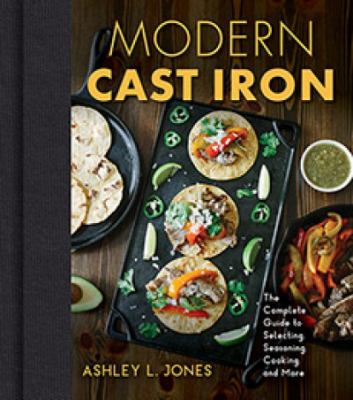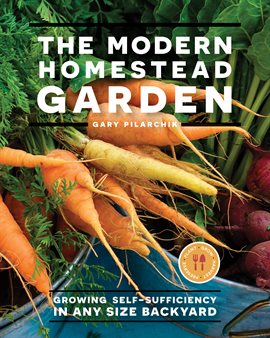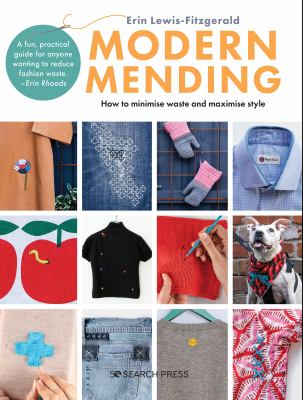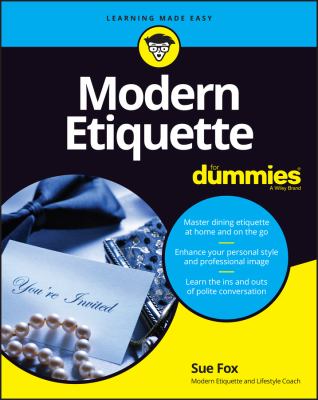While selecting books for a display on the topic of “Traditional vs Modern,” I was surprised by how many books in the “modern” category seemed decidedly traditional. I found books on modern mending, modern knifemaking, Feng Shui modern and (this one made me laugh) modern cast iron. I have developed a theory, which I hope is true, that people have come full circle on some of their values. In the 1950s, advertisers tempted consumers with the idea of modern pushbutton homes that minimized housework and made daily chores simple. Dishwashers, washers, dryers and countless home gadgets eventually became daily fixtures. I believe people are now able to see the benefits and drawbacks of these developments and are forming a hybrid old/new way of life.
In modern life, many things are available for a surprisingly small amount of money, which seems like a good thing, at first. A quick computer search brings up a new seven-piece set of cookware being sold for $14.97, for example. How is this possible? I don’t know but I do know that many things which are sold cheaply are not made to last. That means, along with throwing away money, we are throwing away products and adding to the landfill. Cue “Modern Cast Iron, the Complete Guide to Selecting, Seasoning, Cooking, and More,” by Ashley L. Jones. Cast iron is a common sight in antique shops because, if treated correctly, it lasts for a very long time. This book will teach you how to make it last, as well as offering up recipes for use with cast iron. You might have noticed that, along with making our lives easier, modern developments have done away with the built-in exercise we once got while doing chores. Cast iron will bring some of that back, without going to a gym! (It’s heavy.)
being sold for $14.97, for example. How is this possible? I don’t know but I do know that many things which are sold cheaply are not made to last. That means, along with throwing away money, we are throwing away products and adding to the landfill. Cue “Modern Cast Iron, the Complete Guide to Selecting, Seasoning, Cooking, and More,” by Ashley L. Jones. Cast iron is a common sight in antique shops because, if treated correctly, it lasts for a very long time. This book will teach you how to make it last, as well as offering up recipes for use with cast iron. You might have noticed that, along with making our lives easier, modern developments have done away with the built-in exercise we once got while doing chores. Cast iron will bring some of that back, without going to a gym! (It’s heavy.)
 Speaking of cooking, in the past more people grew their own food. If you are as bad at this as I am, you might benefit from “The Modern Homestead Garden: Growing Self-sufficiency in Any Size Backyard,” by Gary Pilarchik. In Pilarchik’s mind, “It doesn’t matter whether ‘home’ is 50 acres in the country, a suburban corner lot, or an apartment in the city; all you need is a desire to reduce your footprint on the earth and live a more sustainable life.” He lays out all of the ins and outs of growing a garden from seed to easy food preservation.
Speaking of cooking, in the past more people grew their own food. If you are as bad at this as I am, you might benefit from “The Modern Homestead Garden: Growing Self-sufficiency in Any Size Backyard,” by Gary Pilarchik. In Pilarchik’s mind, “It doesn’t matter whether ‘home’ is 50 acres in the country, a suburban corner lot, or an apartment in the city; all you need is a desire to reduce your footprint on the earth and live a more sustainable life.” He lays out all of the ins and outs of growing a garden from seed to easy food preservation.
Modern times have given birth to the phenomenon of “fast fashion.” Inexpensive clothes, that don’t last long, give customers the chance to be up with the latest trends. This can be fun, but, unfortunately, an awful lot of poorly made or out-of-style clothing ends up in the landfill. What if you want to hang onto a favorite piece longer? You will need to turn to your grandparents’ (or great-grandparents’) habit of mending clothes. Mending, while an age-old skill, has changed! Traditionally, mending was meant to go unnoticed. Maybe it was a sign of being too poor to replace your old things, or maybe the mender liked the clothes exactly as they were designed. Of course, you can still mend invisibly, given the right skills, but a newer trend is “visible mending.”
up with the latest trends. This can be fun, but, unfortunately, an awful lot of poorly made or out-of-style clothing ends up in the landfill. What if you want to hang onto a favorite piece longer? You will need to turn to your grandparents’ (or great-grandparents’) habit of mending clothes. Mending, while an age-old skill, has changed! Traditionally, mending was meant to go unnoticed. Maybe it was a sign of being too poor to replace your old things, or maybe the mender liked the clothes exactly as they were designed. Of course, you can still mend invisibly, given the right skills, but a newer trend is “visible mending.”  Visible mending is intended to be noticed. It is decorative instead of purely functional. “Modern Mending: How To Minimize Waste and Maximize Style,” by Erin Lewis-Fitzgerald, is one of several books the library carries to help instruct and inspire you. You might also enjoy incorporating embroidery into your mending. “Modern Embroidery: A Book of Stitches to Unleash Creativity,” by Rachael Dobbins, uses “a combination of traditional and unconventional stitching and macramé techniques, Modern Embroidery takes traditional embroidery design to the next level while truly encouraging readers to think outside the box.”
Visible mending is intended to be noticed. It is decorative instead of purely functional. “Modern Mending: How To Minimize Waste and Maximize Style,” by Erin Lewis-Fitzgerald, is one of several books the library carries to help instruct and inspire you. You might also enjoy incorporating embroidery into your mending. “Modern Embroidery: A Book of Stitches to Unleash Creativity,” by Rachael Dobbins, uses “a combination of traditional and unconventional stitching and macramé techniques, Modern Embroidery takes traditional embroidery design to the next level while truly encouraging readers to think outside the box.”
Finally, I will leave you with something that never gets old: good manners. “Modern Etiquette: for dummies,” by Sue Fox, is less about signaling your class level than treating the people around you politely and respectfully. The book tackles such topics as how to behave on social media, knowing when you should put your phone aside and focus on the moment, improving your communication skills and how to navigate pronouns when you are unsure of someone’s gender. I imagine we all have our pet peeves regarding people’s use of technology and other relatively recent challenges. It’s handy to have an etiquette guide for these modern problems.
topics as how to behave on social media, knowing when you should put your phone aside and focus on the moment, improving your communication skills and how to navigate pronouns when you are unsure of someone’s gender. I imagine we all have our pet peeves regarding people’s use of technology and other relatively recent challenges. It’s handy to have an etiquette guide for these modern problems.
Ideally, we can all learn something from each other, young or old. The blending of the traditional and modern makes life richer for everyone. I hope you find a library book that helps you strike the right balance!



